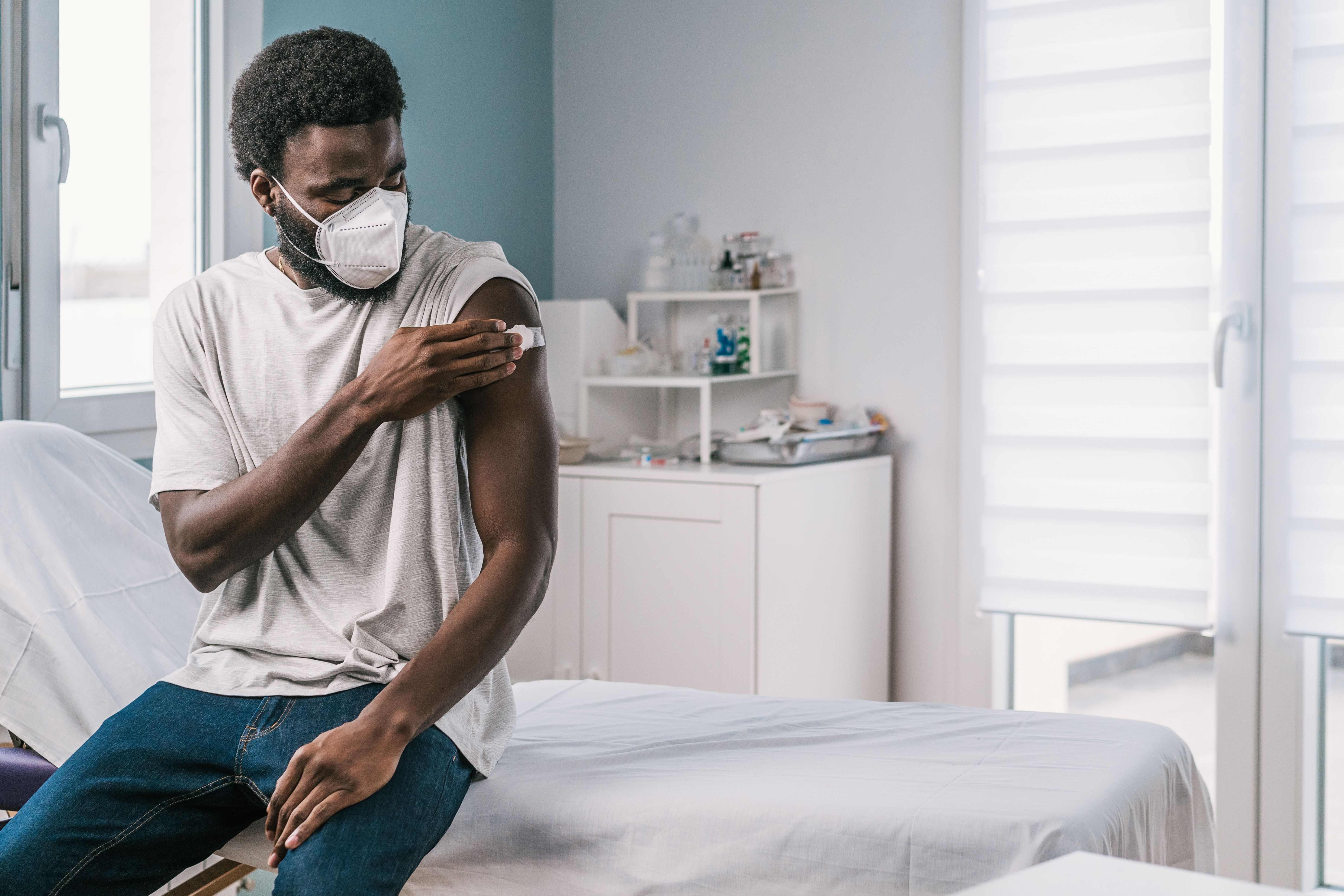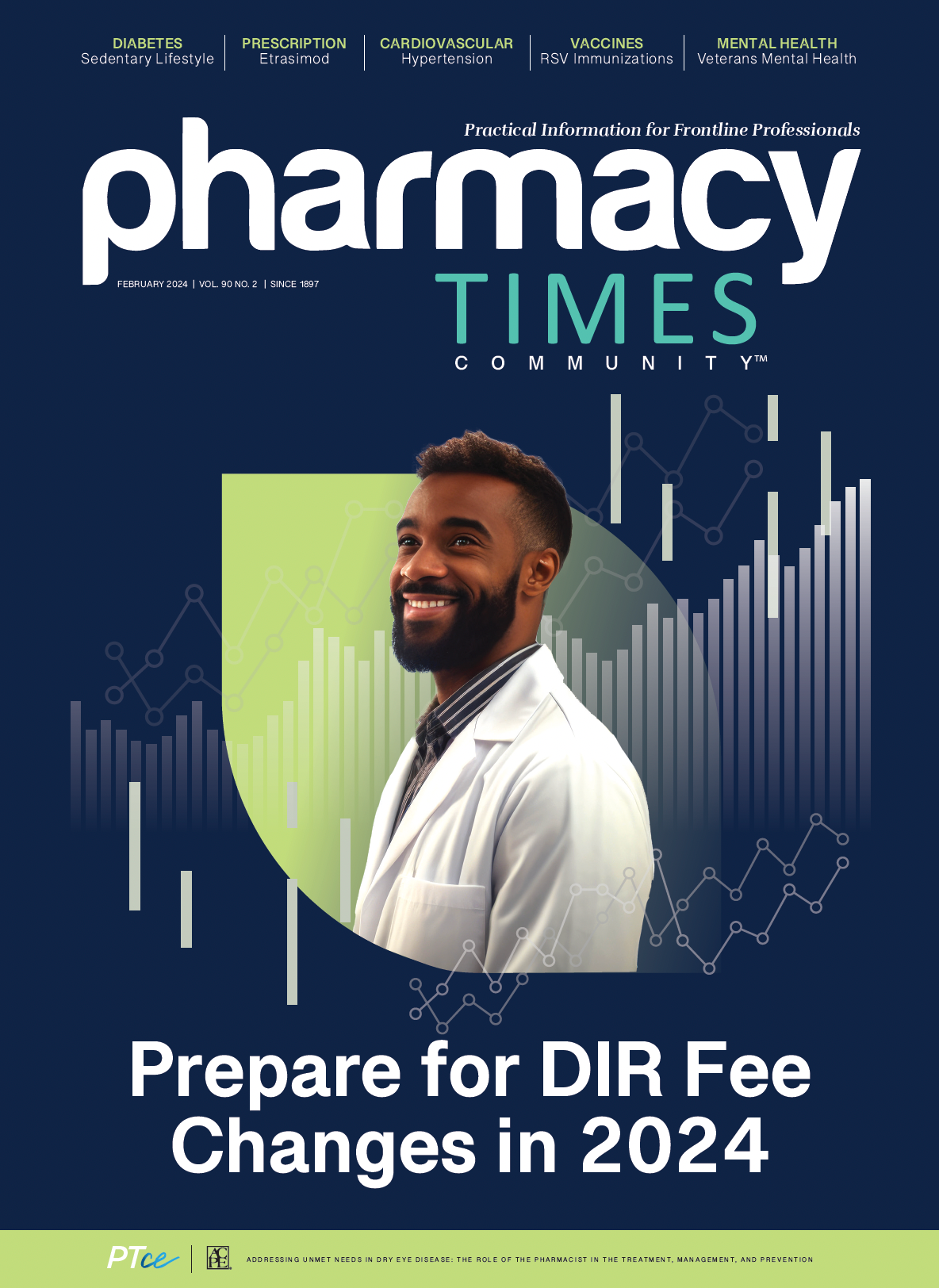Publication
Article
Pharmacy Times
America Must Address the Pandemic of Health Care Inequities
Author(s):
Black History Month provides a reminder of the systemic barriers facing many Americans
February is Black History Month, a reminder of how vital it is to have conversations about health care inequities, particularly among racial minorities. Health care inequities are defined as avoidable and unjust inequalities that can lead to inferior health for disadvantaged social groups, including people who are poor and/or disabled, women, and racial and ethnic minorities.1 Black individuals have predominantly been classified as an underserved population.
Image credit: Alvaro Sanchez/ADDICTIVE STOCK | stock.adobe.com

The existing gaps in health care equity were increasingly brought to light during the worst public health calamity in years: the COVID-19 pandemic. Infection rates with COVID-19 are 2.5 times higher among people of color than in White populations.2 Specifically, Black individuals account for 24% of COVID-19 deaths where race is known, although they make up only 13% of the US population.3 The COVID-19 death rate is twice as high for Black individuals as for White individuals.4 Additionally, although COVID-19 testing is crucial, fewer tests are completed in neighborhoods with higher racial and ethnic minorities and lower average household incomes.5
These health care inequities and differences in outcomes are not new. Chronic disease burden, morbidity, and mortality are all significantly higher among young adult Black individuals than the US population as a whole, placing them at a higher risk of contracting COVID-19.6 Their life expectancy in 2020 was also 3.6 years shorter than that of White individuals.6 In 2019, Black individuals were 30% more likely to die from heart disease, and they have an infant mortality rate that is twice that of White individuals.7 Black individuals also have the highest mortality rate for all cancers combined, compared with any other racial or ethnic group.7
Health care inequities are worsened due to limited access to necessary resources such as food and housing and poor work environments. Black individuals account for approximately 40% of the nation’s unhoused population, and given that homeless people often live in close quarters, they are exceptionally vulnerable to COVID-19.4 Approximately 24% of Black individuals use public transportation, which also increases risks due to less social distancing.8
More Black individuals were also unable to work remotely during the pandemic compared with White workers.9 Many were working in high-risk environments, such as meatpacking plants, where the COVID-19 transmission rates were as high as 75%.10 Fewer workplace benefits and higher costs make it harder for Black individuals to save money and afford personal protective equipment.8 Nearly 40% of Black workers have jobs that do not offer them a single paid sick day.4 Therefore, they continue to work even when they are sick, potentially exposing other people to their illness.4
The increased unemployment rates among Black individuals also play a role in health care inequities, due to their impact on financial stability. Without employment, many people do not have insurance, which may prevent them from seeking health services and medications when needed. One in 7 US adults indicated they would not seek COVID-19 treatment due to the cost.11 Not having an income can increase stress and prevent individuals from being able to afford nutritious food, which can negatively affect health outcomes as well. The uninsured rate for Black individuals is 12% compared with 9% for White individuals.6 However, even after insurance coverage, employment, age, gender, marital status, and geographic location are controlled, Black individuals have worse health outcomes in nearly every illness category.11
Our medical education has taught us that prevention is the best medicine. This is why it is our utmost responsibility as health care professionals to fight systemic and individual racism, address inequalities, and close the existing gaps in patient care. Ultimately, this begins before we step into the world with our embroidered lab coats—it begins in the classroom.
Unfortunately, many medical schools have curricula that lack the context of race in medicine.
“I noticed a lack of teaching about darker skin tones, and how certain symptoms appear differently in those who aren’t White,” reports Malone Mukwende, a medical student and coauthor of Mind the Gap, a clinical handbook of various signs and symptoms of illness that may appear differently in people of color.12 “The booklet addresses many issues that have been further exacerbated during the COVID-19 pandemic, such as families being asked if potential COVID-19 patients are ‘pale’ or if their lips ‘turned blue.’ These are not useful descriptions for a Black patient, and as a result, their care is compromised from the first point of contact.”12
The lack of context of race in medical curricula may also be partially due to the lack of diversity in medical schools, which forestalls much-needed conversations in these settings. Only 3106 Black students were enrolled in MD-granting medical schools in the 2023-2024 academic year, compared with 20,044 White students.14 This number also plays into the workforce: only 5% of active physicians are Black.15
Moving forward, it is imperative that we provide better health care for racial minorities by addressing the inequities within our work and social environments. To control COVID-19, effective and affordable testing, contact tracing, quarantine, and treatment are crucial. It is necessary for the federal government and health care systems to create solid plans to provide truly equal and accessible health care for all.
About the Author
Shaziya Barkat, PharmD, CSP, is a clinical pharmacist at Shields Health Solutions and a writer based in Dallas, Texas.
References
- National Academies of Sciences, Engineering, and Medicine; Health and Medicine Division; Board on Population Health and Public Health Practice; Committee on Community-Based Solutions to Promote Health Equity in the United States; et al. Communities in Action: Pathways to Health Equity. National Academies Press (US); 2017.
- Goldfarb A, Rivera JM. COVID-19 race and ethnicity data: what’s changed, and what still needs improvement. The Atlantic. August 21, 2020. Accessed January 10, 2024. https://covidtracking.com/analysis-updates/covid-19-race-and-ethnicity-data-whats-changed-and-what-stillneeds
- Rivera JM, Goldfarb A. Early COVID-19 race data shows disproportionate loss of Black lives—it’s time for states to release the rest of the data. The Atlantic. June 4, 2020. Accessed January 10, 2024. https://covidtracking.com/analysis-updates/early-covid-19-race-data-shows-disproportionateloss-of-black-lives-its-time
- Reyes MV. The disproportional impact of COVID-19 on African Americans. Health Hum Rights. 2020;22(2):299-307.
- Bilal U, Tabb LP, Barber S, Roux AVD. Spatial inequities in COVID-19 testing, positivity, confirmed cases, and mortality in 3 US cities: an ecological study. Ann Intern Med. 2021;174(7):936-944. doi:10.7326/M20-3936
- US Department of Health and Human Services. Health insurance coverage and access to care among Black Americans: recent trends and key challenges. February 22, 2022. Accessed January 10, 2024. https://aspe.hhs.gov/sites/default/files/documents/08307d793263d5069fdd-6504385e22f8/black-americans-coverages-access-ib.pdf
- Black/African American health. US Department of Health and Human Services Office of Minority Health. Accessed January 10, 2024. https://minorityhealth.hhs.gov/blackafrican-american-health
- Thompson VS. African American employment and COVID-19: disparities and compounding risks. Research-to-Policy Collaboration. April 1, 2020. Accessed January 10, 2024. https://research2policy.org/covid19-african-american-employmentLabor force statistics from the current population survey. US Bureau of Labor Statistics. Updated November 2, 2022. Accessed January 10, 2024. https://www.bls.gov/cps/effects-of-the-coronavirus-covid-19-pandemic.htm
- Saitone TL, Schaefer KA, Scheitrum DP. COVID-19 morbidity and mortality in US meatpacking counties. Food Policy. 2021;101:102072.doi:10.1016/j.foodpol.2021.102072
- Witters D. In US, 14% with likely COVID-19 to avoid care due to cost. Gallup. April 28, 2020. Accessed January 10, 2024. https://news.gallup.com/poll/309224/avoid-care-likely-covid-due-cost.aspx
- Bridges KM. Implicit bias and racial disparities in health care. American Bar Association. Accessed January 10, 2024. https://www.americanbar.org/groups/crsj/publications/human_rights_magazine_home/the-stateof-healthcare-in-the-united-states/racial-disparities-in-health-care/
- Page S. A medical student couldn’t find how symptoms look on darker skin. He decided to publish a book about it. Washington Post. July 22, 2020. Accessed January 10, 2024. https://www.washingtonpost.com/lifestyle/2020/07/22/malone-mukwende-medical-handbook
- 2023 facts: enrollment, graduates, and MD-PhD data. Association of American Medical Colleges. Accessed January 10, 2024. https://www.aamc.org/data-reports/students-residents/data/2023-facts-enrollmentgraduates-and-md-phd-data
- Diversity in medicine: facts and figures 2019. Association of American Medical Colleges. Accessed January 10, 2024. https://www.aamc.org/data-reports/workforce/report/diversity-medicine-facts-and-figures-2019

Newsletter
Stay informed on drug updates, treatment guidelines, and pharmacy practice trends—subscribe to Pharmacy Times for weekly clinical insights.





